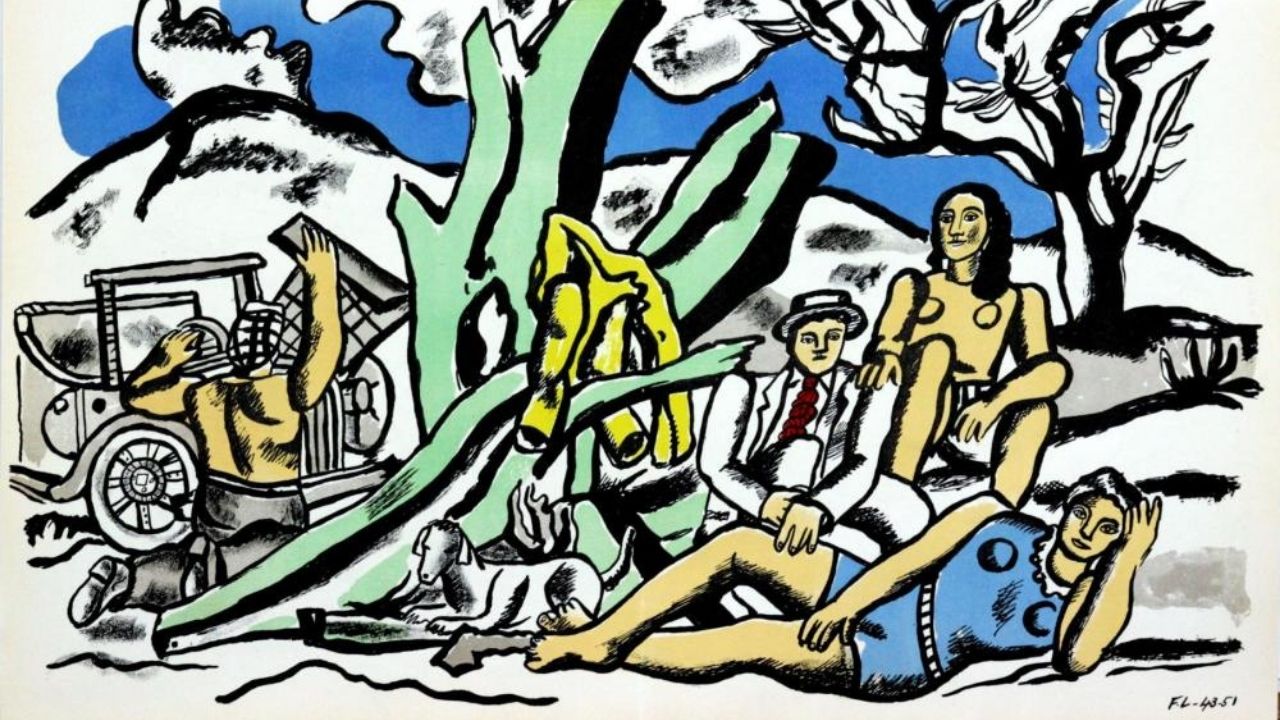Fernand Leger (February 4, 1881-August 17, 1955) possessed a style that could not be easily defined since the elements of his works changed dramatically throughout different periods of his life. At times, his work is considered as Orphist or Purist, and one can also say that it was par the course with other Parisian artists of the “Golden Section” or Section d’Or. Regardless of classifications, the fact that Leger’s work exemplifies a certain versatility that surpasses many boundaries. From the delicate curves of “The Yellow Leaf” to the profound celebration of industrialism in The Builders, to his depiction of the human form, one can see how an artist can take the world around him and give his audience a whole new perspective.
Biography
Early Life
Born on February 4, 1881, in Argentan, France to a peasant family, Fernand was only 16 when he started his apprentice under an architect wing. Two years later, in 1900, he moved to Paris, where he continued working as an architectural drafter and later as a photographs retoucher. While his earliest-known works date back to 1905, his style was inspired by Paul Cézanne exhibition at the Paris Salon d’Automne in 1907, and later by Pablo Picasso’s early cubism and Georges Braque’s painting style. His work characterizes bold colors allocated to cylindrical and geometric forms, often arranged in disciplined compositions.
Education
While Leger’s education “starts” with the rejection by the École des Beaux-Arts, he convinced two professors to be their unofficial student. He later officially enrolled in the Paris School of Decorative Arts in 1903. Likewise, Fernand’s unofficial education is attributed to the influences of Paul Cézanne, Pablo Picasso, and Georges Braque, and many others. He also experienced trauma during World War I, which after being part of the front lines, directly affected his painting style. In 1914, Leger was drafted into the military and unfortunately in 1916,sustained a head injury during a chemical weapons attack on Verdun. The effects would linger, yet they only served to embolden Leger’s fixation with the human form.
Legacy of Fernand Léger
In 1911, he exhibited his work at the Salon des Independants, which gained attention in the subgenre of Cubism. During this time, his creations were also featured at the Salon d’Automne and thus, garnered more recognition. From there, he would continue to stretch his skills even further as he ventured into other subjects and even other creative endeavors such as book illustrations and film making. His art, however, strayed from his usual abstract style and more into Futurism.
Going into the 1930s, Leger’s interest turned toward the concept of equality that resulted in his series of paintings known as “cycles.” This group encompassed his growing fascination with technology and the human form.
His timeless influence is also noted in the work of Henry Moore. Leger also paved the way for other artists who incorporated the Cubist style and is thought to have had a profound influence on the artists of the pop art movement. Finally, his belief in the power art as a means of uniting people inspired the movement known as Fluxus where community art meshes with activism.
Death
The last two decades of Leger’s life found him teaching in the U.S. and having a major influence on many young artists. In 1945, he moved back to Europe, remarried two years after his first wife’s death. At this point, he developed an interest in creating large scale works like murals and stained-glass windows that can be found in South America and Europe. On August 17, 1955, Leger died at his home in Gif-sur-Yvette.
Famous Work
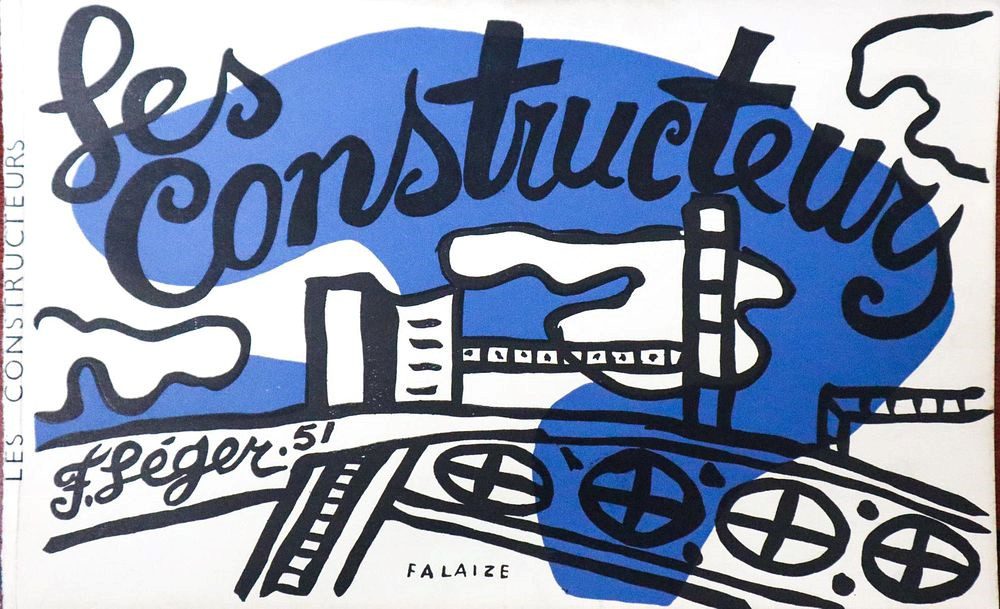
Les Constructeurs
Les Constructeurs reflects Leger’s fascination with technology and industry. At the same time, it is quite telling of his perspective of social equality. The painting has a large label that proclaims “Les Constructeurs” which is meant to catch the viewer’s attention. There is also a bridge that extends from the left to the right. Additionally, a road winds on the right with people leaving next to it. The construction seems to be taking place near a residential area. Behind it is a blue background that extends from the top left to the bottom right. One interesting trait about the elements of this painting is the weightlessness of the objects and people that Leger created.
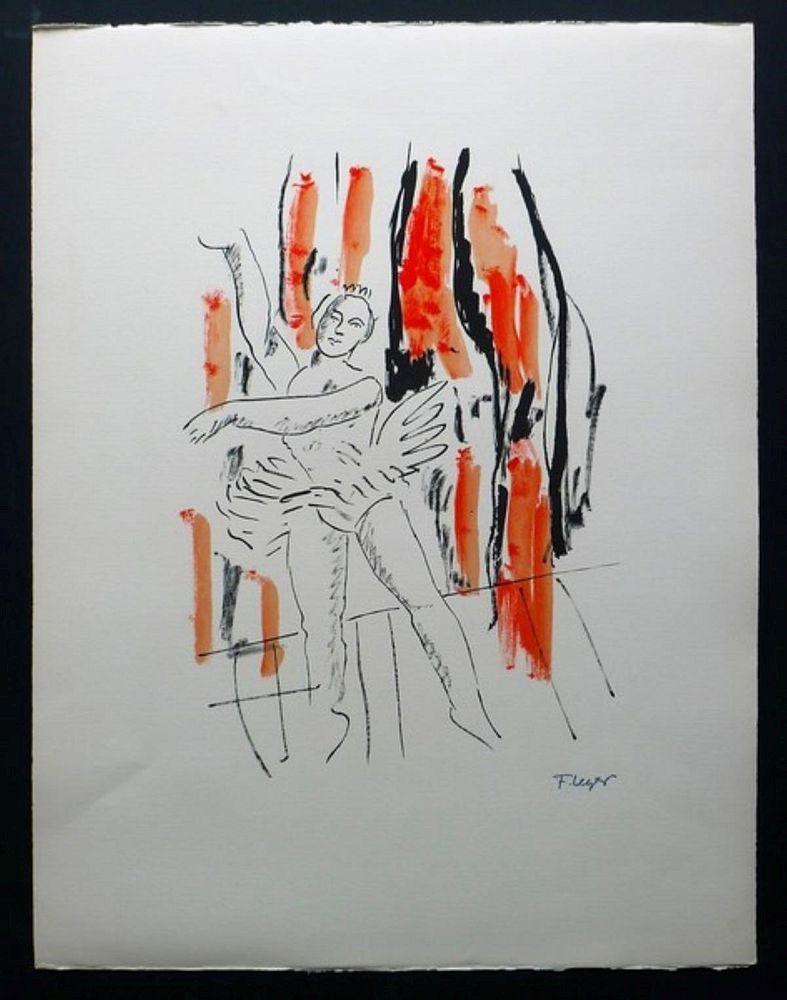
La Danseuse
La Danseuse dates back to 1959. The picture’s focal point is a woman who is dancing ballet. Her skirt appears to be flowing along with her body’s motion as its hem flies around her legs. She dances on pointe as she aims to achieve a grandiose, circular like motion. Behind her is a red and black background that reflects the energetic, passionate mood of her dance. Her slight smile expresses certain confidence in her performance. The bold colors in the background and the simplicity of the sketch of the subject fall in line with the thought-provoking style of Leger.
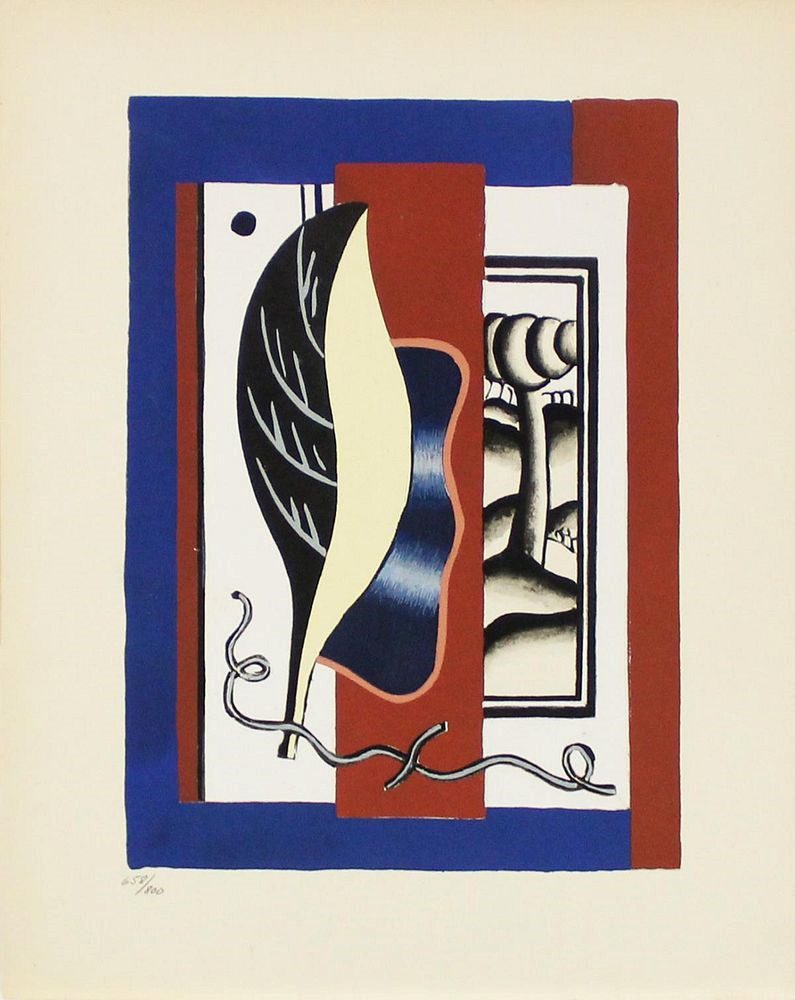
La Feuille Jaune
Created in 1928 in France, the “yellow leaf” or La Feuille Jaune is hand colored through stencils painted with pochoir in brilliant gouache colors. This technique is called pochoir which is French for the stencil. Although this work displays the cubist influence, it has some of the tube-like elements that Leger is known for. Another aspect of Leger’s style is the boldness of the two colors that make up the focus, yet they are still a bit subdued as compared to his later works. Nonetheless, Leger presented a stark contrast between the solid colors that make up the perimeter around the focal point and the solid black surfaces and lines.

Still Life
Still Life is a color lithograph that was published by Falaize in Paris in 1951. Though this piece bears the same name as other works by Leger—and even defies its name since most still life images present a recognizable object—it differs from the painting with the same title. This piece possesses more simplicity in the sense that the focal point does not take up as much of the backdrop as the others. Nonetheless, the beholder might detect a hint of the Cubism that so heavily influenced Leger in the early part of his career. Likewise, this work also reflects his Purist approach which makes it more interesting.
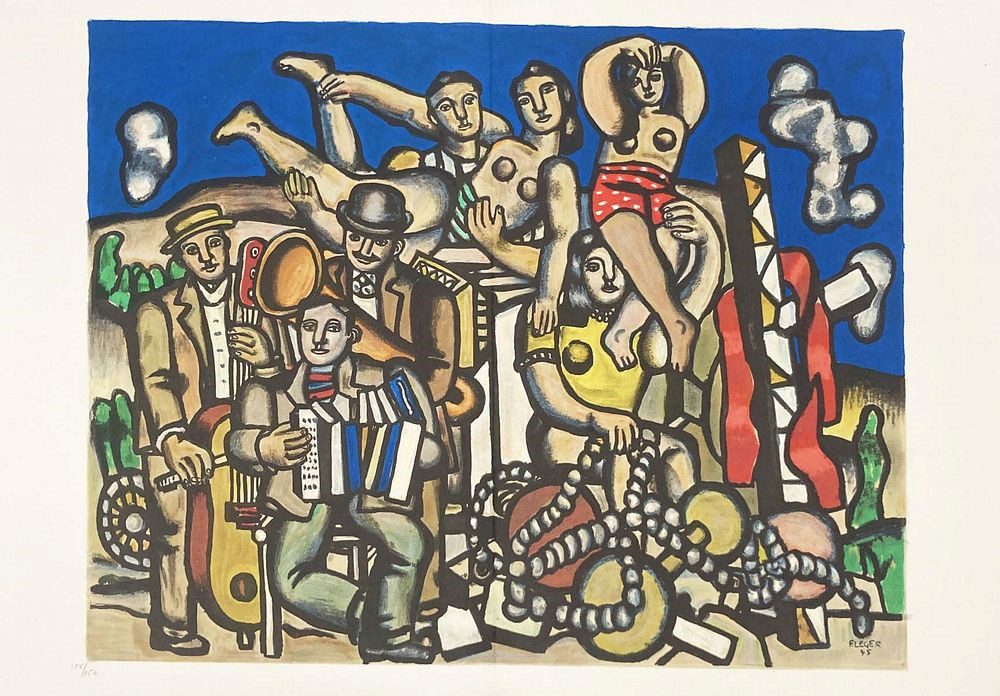
Les Musiciens
With evidence of his curvilinear and tubular forms, in this piece, Leger depicts a travelling band of performers in a graceful yet almost whimsical manner. This piece is also known by another title of Acrobates et Musiciens or “Acrobats and Musicians.” One can also argue that this work exemplifies Leger’s belief that art should be made accessible to all behold it. Plus, Les Musiciens also reflects Leger’s celebration of the human form as well as the human spirit along with the diversity. Though the subjects are performers, they still possess a certain humility that some of Leger’s audience may have related to.
So, if you are in the market for any of Fernand Leger’s works, call us now on 267-687-8378 or leave an inquiry on Dane Fine Art. We are happy to help you find the artwork you are looking for.

